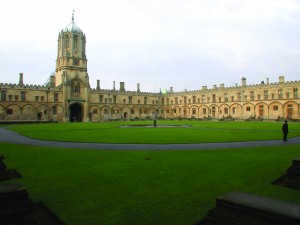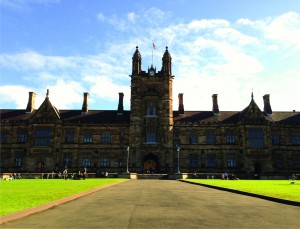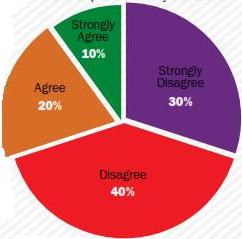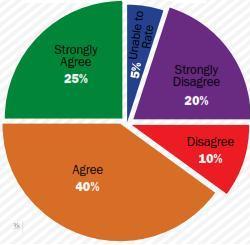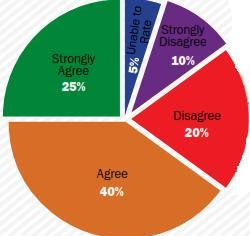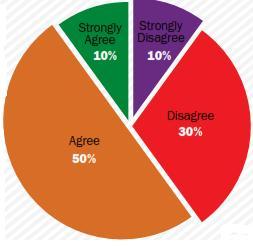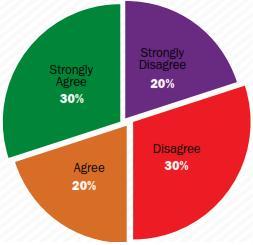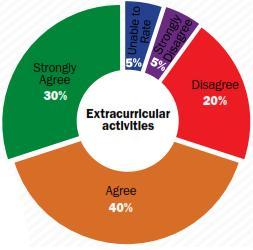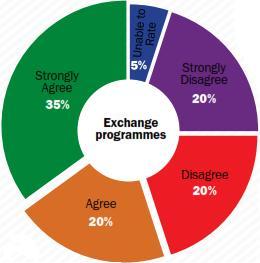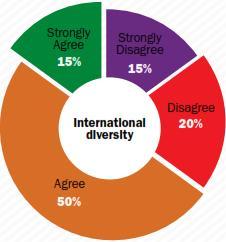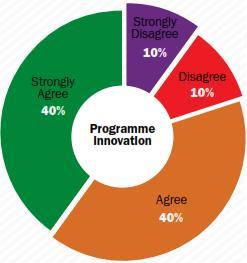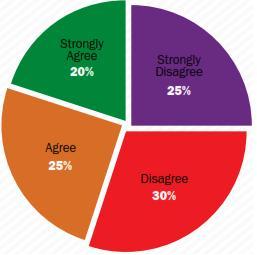After having conducted expansive research by contacting 1600 institutes and over 9000 recruiters around the world, Youth Inc has ranked the top 100 universities in the world to pursue an undergraduate programme
Welcome to the Youth Incorporated, Education Times and Rediff.com Global University Rankings 2015. Continuing with our yearly rankings for the best global universities, we have conducted widespread research work spanning several months to sort through extensive raw data and bring out a finished analysis that is practical and can be helpful in the selection process for students looking to enrol in the top programmes the world over. We got in touch with 1600 institutes to gauge their responses to dispassionate questions that would assist us in evaluating the quality of the educational experience provided by them. We also considered the responses from the current students attending the universities along with official responses from their respective administrative bodies. We also thought that in order to make our rankings most relevant and credible it was important that we accumulated responses from alumni of the institutes. In addition, we procured information from 9000 recruiters that have previously recruited graduates from the institutes considered in the surveys.
Once an adequate amount of data was gathered, we broke down the information by placing emphasis on the most important criteria a student considers when taking admission at an institute. Factors such as value for money, student and recruiter satisfaction, infrastructure and facilities, teaching methodologies and much more were considered to rank the institutes. This scrupulous method was employed by us to bring out the rankings of the top 100 universities worldwide. We were also able to provide rankings based on regional distribution and streams of study. To give the readers a holistic view of how a particular institute has fared over the years, the ranking for this year was placed against our previously conducted annual rankings. We hope our in depth survey will guide students in making the right choice yet again!
TOP 100 UNIVERSITIES
We present to you the rankings of the top 100 colleges in the world, collated from opinions by students, faculty and recruiters of more than 1600 institutes from around the world
HOW HAVE THE INSTITUTES FARED COMPARED TO 2013 AND 2014?
Placing 2015’s rankings against those we conducted in 2013 and 2014, a comparison of the performance of the institutes over the years is clearly visible. Harvard University and Stanford University have retained their respective positions as the top two universities, while University of Oxford and Massachusetts Institute of Technology came back to the third and fourth positions respectively as in 2013, knocking off University of Pennsylvania to fifth place. The top 10 of 2014 have managed to stay at the top of the table with a few universities improving on their previous rank and a few dropping by a rank or two. The top 10 continues to be dominated by American institutes with the only exception being University of Oxford.
Among the Asian universities, University of Tokyo is the highest at 15th place, which has remained steady from its 2014 rank. It’s followed by Indian Institute of Technology Bombay at 20, which has come up from 24, and National University of Singapore, which has slipped to 25 from 23. As is evident, most universities in the top 100 seem to show a consistent performance over the years with similar rankings.
The India Story
This year, the four colleges from India that have always appeared in our rankings have actually risen in their ranks. IIT-Bombay is the only Indian college that has managed to reach the top 20 of the world. IIT-Delhi has maintained its position at 27 for the past two years, showing considerable consistency. However, IIT-Kanpur and University of Delhi are also climbing up, although they have a long way to go. India, today, is a young country, with more than 50 percent of its population below the age of 25, much higher than its more developed counterparts around the world. There is a high demand for quality education in our country today, but how much of it is available to those who need it? With just four Indian universities in the top 100 global rankings, it’s no wonder that several students aim to study abroad and then come back to work here. The deciding factor, it seems, comes down to infrastructure and placement opportunities.
And yet, the ground reality might be a little different. Even if most Indian universities don’t feature in the top 100 rankings, the fact remains that the student success rate at these universities might be almost as high as those from Harvard or Oxford. In a study that tracked alumni of the top universities who went on to becoming billionaires, University of Mumbai came in at number nine, with 12 billionaires, outperforming the likes of LSE, Columbia and MIT; Harvard was at the top spot with 25 billionaire alumni.
Of course, there might be a lot for the Indian universities to catch up on when it comes to infrastructure and global viability, but things aren’t as glum as they seem. With Prime Minister Narendra Modi coming in to the picture, there are great expectations amongst the public that he will work on improving the education sector to match international standards and see more Indian universities being featured in global rankings. He acknowledges the shortfalls in the educational sector in India, as he remarks, “Our education apparatus can’t be one that produces robots. That can happen even in a laboratory. There has to be overall personality development.” If one was to consider our top 100 rankings as a yardstick, then it’s pretty clear that the only way is up for the up-and-coming Indian universities.
| Rank | Institute | Country | Score |
|---|---|---|---|
| 1 | Harvard University | USA | 100 |
| 2 | Stanford University | USA | 99.3 |
| 3 | University of Oxford | UK | 99 |
| 4 | MIT | USA | 98 |
| 5 | University of Pennsylvania | USA | 97 |
| 6 | University of Chicago | USA | 96.5 |
| 7 | Columbia University | USA | 96 |
| 8 | Princeton University | USA | 95.4 |
| 9 | Cornell University | USA | 95 |
| 10 | Yale University | USA | 94.3 |
| 11 | California Institute of Technology | USA | 94 |
| 12 | London School of Economics | UK | 93 |
| 13 | Imperial College London | UK | 92 |
| 14 | IE University | Spain | 91.5 |
| 15 | University of Tokyo | Japan | 91 |
| 16 | University of Cambridge | UK | 90.5 |
| 17 | University of Waterloo | Canada | 90 |
| 18 | New York University | USA | 89.5 |
| 19 | Brown University | USA | 88.2 |
| 20 | Indian Institute of Technology Mumbai | India | 88 |
| 21 | University of Michigan Ann Arbor | USA | 87 |
| 22 | Carnegie Mellon University | USA | 86.5 |
| 23 | Ecole Normale Superieure | France | 86 |
| 24 | University of California at Los Angeles | USA | 85 |
| 25 | National University Singapore | Singapore | 84 |
| 26 | University of Melbourne | Australia | 83 |
| 27 | Indian Institute of Technology Delhi | India | 82 |
| 28 | Hong Kong University of Science & Technology | China | 81.5 |
| 29 | University of California at Berkeley | USA | 81 |
| 30 | Ludwig-Maximilians-Universitat Munchen | Germany | 80.5 |
| 31 | Northwestern University | USA | 80 |
| 32 | Chinese University of Hong Kong | China | 79.5 |
| 33 | Duke University | USA | 79 |
| 34 | University College London | UK | 78.6 |
| 35 | Emory University | USA | 78.3 |
| 36 | Ecole Polytechnique Federale de Lausanne | Switzerland | 78 |
| 37 | Johns Hopkins University | USA | 77 |
| 38 | University of Virginia | USA | 76.5 |
| 39 | Universidade de Sao Paulo | Brazil | 76 |
| 40 | University of Texas at Austin | USA | 75 |
| 41 | King’s College London | UK | 74.5 |
| 42 | University of Zurich | Switzerland | 74 |
| 43 | University of Copenhagen | Denmark | 73.5 |
| 44 | Rice University | USA | 73 |
| 45 | University of British Columbia | Canada | 72.5 |
| 46 | Dartmouth College | USA | 72 |
| 47 | HEC | France | 71.7 |
| 48 | Peking University | China | 71.3 |
| 49 | University of Helsinki | Finland | 71.1 |
| 50 | University of Sydney | Australia | 69.6 |
| 51 | Technische Universitat Munchen | Germany | 69.5 |
| 52 | Universitat Heidelberg | Germany | 69 |
| 53 | Pontificia Universidad Catolica de Chile | Chile | 68 |
| 54 | University of Southern California | USA | 67 |
| 55 | Vanderbilt University | USA | 66 |
| 56 | Fudan University | China | 65 |
| 57 | Universidad de Buenos Aires | Argentina | 64 |
| 58 | Australian National University | Australia | 63.5 |
| 59 | University of Warwick | UK | 63 |
| 60 | Tokyo Institute of Technology | Japan | 62 |
| 61 | Nanyang Technological University | Singapore | 61 |
| 62 | Seoul National University | Korea | 60 |
| 63 | University of Birmingham | UK | 59.5 |
| 64 | Ecole Polytechnique | France | 59 |
| 65 | Monash University | Australia | 58 |
| 66 | University of Wisconsin Madison | USA | 57.8 |
| 67 | Erasmus University Rotterdam | Netherlands | 57.5 |
| 68 | University of Edinburgh | UK | 57.2 |
| 69 | University of New South Wales | Australia | 57 |
| 70 | Paris Dauphine University | France | 56.3 |
| 71 | University of North Carolina Chapel Hill | USA | 56 |
| 72 | Universidad Nacional Autonoma de Mexico | Mexico | 55 |
| 73 | University of Queensland | Australia | 54 |
| 74 | Tohoku University | Japan | 53 |
| 75 | University of Surrey | UK | 52 |
| 76 | University of Auckland | New Zealand | 51 |
| 77 | Tsinghua University | China | 50.5 |
| 78 | University of Groningen | Netherlands | 50 |
| 79 | University of Bern | Switzerland | 49 |
| 80 | Indian Institute of Technology Kanpur | India | 48 |
| 81 | University of Rochester | USA | 47 |
| 82 | Georgia Institute of Technology | USA | 46 |
| 83 | Uppsala University | Sweden | 45.6 |
| 84 | National Taiwan University | Taiwan | 44 |
| 85 | ESADE Business School | Spain | 43.8 |
| 86 | University of Adelaide | Australia | 43.5 |
| 87 | University of York | UK | 43.2 |
| 88 | Ecole Centrale de Paris | France | 43 |
| 89 | University of Washington | USA | 42.7 |
| 90 | University of Delhi | India | 42.4 |
| 91 | Purdue University | USA | 42.1 |
| 92 | Stockholm University | Sweden | 41.8 |
| 93 | University of Sciences Philadelphia | USA | 41.5 |
| 94 | University of Amsterdam | Netherlands | 41.2 |
| 95 | University of Pittsburg Bradford | USA | 41 |
| 96 | Bradley University | USA | 40.7 |
| 97 | University of Hawaii Hilo | USA | 40.5 |
| 98 | Grenoble Ecole de Management | France | 40.2 |
| 99 | Washington University St Louis | USA | 39.7 |
| 100 | Heriot-Watt University | UK | 39 |
2015 BEST REGIONAL UNIVERSITIES
Top European Universities
| Rank | Institute | Country |
|---|---|---|
| 1 | University of Oxford | UK |
| 2 | London School of Economics | UK |
| 3 | Imperial College London | UK |
| 4 | IE University | Spain |
| 5 | University of Cambridge | UK |
| 6 | Ecole Normale Superieure | France |
| 7 | Ludwig-Maximilians-Universitat Munchen | Germany |
| 8 | University College London | UK |
| 9 | Ecole Polytechnique Federale de Lausanne | Switzerland |
| 10 | King’s College London | UK |
Top US Universities
| Rank | Institute | Country |
|---|---|---|
| 1 | Harvard University | USA |
| 2 | Stanford University | USA |
| 3 | Massachusetts Institute of Technology | USA |
| 4 | University of Pennsylvania | USA |
| 5 | University of Chicago | USA |
| 6 | Columbia University | USA |
| 7 | Princeton University | USA |
| 8 | Cornell University | USA |
| 9 | Yale University | USA |
| 10 | California Institute of Technology | USA |
Top Australian Universities
| Rank | Institute | Country |
|---|---|---|
| 1 | University of Melbourne | Australia |
| 2 | University of Sydney | Australia |
| 3 | Australian National University | Australia |
| 4 | Monash University | Australia |
| 5 | University of New South Wales | Australia |
| 6 | University of Queensland | Australia |
| 7 | University of Adelaide | Australia |
Top Asian Universities
| Rank | Institute | Country |
|---|---|---|
| 1 | University of Tokyo | Japan |
| 2 | Indian Institute of Technology Mumbai | India |
| 3 | National University Singapore | Singapore |
| 4 | Indian Institute of Technology Delhi | India |
| 5 | Hong Kong University of Science & Technology | China |
| 6 | Chinese University of Hong Kong | China |
| 7 | Peking University | China |
| 8 | Fudan University | China |
| 9 | Tokyo Institute of Technology | Japan |
| 10 | Nanyang Technological University | Singapore |
TOP UNIVERSITIES IN DIFFERENT STREAMS
LIFE SCIENCES & MEDICINE
| Rank | Institute | Country |
|---|---|---|
| 1 | Johns Hopkins University | USA |
| 2 | Stanford University | USA |
| 3 | University of Cambridge | UK |
| 4 | Harvard University | USA |
| 5 | Yale University | USA |
| 6 | University of Oxford | UK |
| 7 | University of California at Berkeley | USA |
| 8 | Cornell University | USA |
| 9 | University of Pennsylvania | USA |
| 10 | Imperial College London | UK |
PURE SCIENCES
| Rank | Institute | Country |
|---|---|---|
| 1 | Harvard University | USA |
| 2 | Stanford University | USA |
| 3 | Massachusetts Institute of Technology | USA |
| 4 | National University Singapore | Singapore |
| 5 | Princeton University | USA |
| 6 | University of Oxford | UK |
| 7 | Yale University | USA |
| 8 | Cornell University | USA |
| 9 | University of Cambridge | UK |
| 10 | University of Tokyo | Japan |
ART & HUMANITIES
| Rank | Institute | Country |
|---|---|---|
| 1 | Harvard University | USA |
| 2 | University of Cambridge | UK |
| 3 | Stanford University | USA |
| 4 | Yale University | USA |
| 5 | University of Oxford | UK |
| 6 | Princeton University | USA |
| 7 | National University Singapore | Singapore |
| 8 | Columbia University | USA |
| 9 | University of Tokyo | Japan |
| 10 | Cornell University | USA |
BUSINESS PROGRAMMES
| Rank | Institute | Country |
|---|---|---|
| 1 | Harvard University | USA |
| 2 | Stanford University | USA |
| 3 | IE University | Spain |
| 4 | National University Singapore | Singapore |
| 5 | Cornell University | USA |
| 6 | Columbia University | USA |
| 7 | University of Cambridge | UK |
| 8 | London School of Economics | UK |
| 9 | Massachusetts Institute of Technology | USA |
| 10 | University of Michigan Ann Arbor | USA |
ENGINEERING PROGRAMMES
| Rank | Institute | Country |
|---|---|---|
| 1 | California Institute of Technology | USA |
| 2 | Massachusetts Institute of Technology | USA |
| 3 | Stanford University | USA |
| 4 | Imperial College London | UK |
| 5 | National University Singapore | Singapore |
| 6 | Indian Institute of Technology Mumbai | India |
| 7 | Cornell University | USA |
| 8 | Indian Institute of Technology Delhi | India |
| 9 | Georgia Institute of Technology | USA |
| 10 | Columbia University | USA |
WHAT STUDENTS WANT
While conducting the analysis of the best universities in the world, we ranked them according to the individual factors students consider to be a bench mark of a prestigious university. Here are the ratings according to the responses of current students of the institutes
I applied for and received a satisfactory scholarship to attend my institution
BEST VALUE FOR MONEY
| Rank | Institute | Country |
|---|---|---|
| 1 | Indian Institute of Technology Mumbai | India |
| 2 | Indian Institute of Technology Delhi | India |
| 3 | National University Singapore | Singapore |
| 4 | Hong Kong University of Science & Tech | Hong Kong |
| 5 | University of Tokyo | Japan |
| 6 | Universitat Heidelberg | Germany |
| 7 | Cornell University | USA |
| 8 | IE University | Spain |
| 9 | Columbia University | USA |
| 10 | University of Chicago | USA |
Most teaching faculty often use innovative ways to teach subjects
INNOVATION IN TEACHING METHODOLOGIES
| Rank | Institute | Country |
|---|---|---|
| 1 | Princeton University | USA |
| 2 | Harvard University | USA |
| 3 | Stanford University | USA |
| 4 | Brown University | USA |
| 5 | Northwestern University | USA |
| 6 | IE University | Spain |
| 7 | University of Cambridge | UK |
| 8 | Ecole Normale Superieure | France |
| 9 | Ludwig-Maximilians-Universitat Munchen | Germany |
| 10 | University of Chicago | USA |
Overall, I am very satisfied with my institute
STUDENT SATISFACTION
| Rank | Institute | Country |
|---|---|---|
| 1 | Stanford University | USA |
| 2 | Brown University | USA |
| 3 | Harvard University | USA |
| 4 | University of Chicago | USA |
| 5 | University of Pennsylvania | USA |
| 6 | IE University | Spain |
| 7 | Ecole Normale Superieure | France |
| 8 | University of Oxford | UK |
| 9 | Columbia University | USA |
| 10 | Yale University | USA |
My institution provides very good campus support including housing
CAMPUS FACILITIES
| Rank | Institute | Country |
|---|---|---|
| 1 | Stanford University | USA |
| 2 | Harvard University | USA |
| 3 | Cornell University | USA |
| 4 | Princeton University | USA |
| 5 | Massachusetts Institute of Technology | USA |
| 6 | University of Oxford | UK |
| 7 | University of Cambridge | UK |
| 8 | National University Singapore | Singapore |
| 9 | University of Chicago | USA |
| 10 | Dartmouth College | USA |
My institution has a career service cell and is well known with recruiters
CAREER SERVICES
| Rank | Institute | Country |
|---|---|---|
| 1 | Harvard University | USA |
| 2 | Stanford University | USA |
| 3 | Columbia University | USA |
| 4 | Cornell University | USA |
| 5 | University of Pennsylvania | USA |
| 6 | Massachusetts Institute of Technology | USA |
| 7 | Carnegie Mellon University | USA |
| 8 | Indian Institute of Technology Mumbai | India |
| 9 | Dartmouth College | USA |
| 10 | Princeton University | USA |
My institution encourages me to participate in extra curricular activities
My institution has many exchange programmes with other institutions and I have taken or will take part in such exchange programmes
There is sufficient international diversity in my class
The programmes taught in my institute are innovative and include company visits
My institution encourages real life learning and helps organise internships with companies
RECRUITER SATISFACTION
| Rank | Institute | Country |
|---|---|---|
| 1 | Harvard University | USA |
| 2 | University of Chicago | USA |
| 3 | Stanford University | USA |
| 4 | University of Pennsylvania | USA |
| 5 | IE University | Spain |
| 6 | Indian Institute of Technology Mumbai | India |
| 7 | Hong Kong University of Science & Technology | China |
| 8 | New York University | USA |
| 9 | Columbia University | USA |
| 10 | Carnegie Mellon University | USA |
RANKING METHODOLOGY
We chose institutes across the world after having discussions with thousands of students, recruiters and faculty. Youth Inc’s research Unit (YRU) also studied domestic rankings in various countries to find the best institutes.
We sent survey links to 1600 institutes and provided them with unique codes so that they could submit their responses online. Institutes were also provided links to online surveys where their current students were asked to rate specific statements that pertained to the factors considered in this ranking. Institutes also sent separate survey links to their recruiters who in turn rated the institute’s career management cell as well as student employability. Over 9000 additional recruiters were sent emails with a survey link. The recruiter list was prepared from the responses of the institutes and also included internationally reputed recruiters.
Below are the factors we considered and the overall weightage assigned to them:
• Careers, recruitment and industry viability of students – 55%
• Diversity and international outlook – 10%
• Innovation – 10%
• Campus, extracurricular activities, exchange programmes – 15%
• Money, student satisfaction – 10%
This category significantly impacts the overall score of an institute since it is the most weighted factor. One of the most important criterion to select institutes is the student’s industry viability after graduation. Recruiters were asked to list and rate the institutes that they were most likely to recruit from. They were asked the likelihood of recruiting again from the same institute and their satisfaction with the institute’s career cell. Recruiters rated students on various factors including analytical and problem solving skills, leadership potential, communication and interpersonal skills and so on. Institutes and students were also asked about the availability and functioning of a career service cell on campus and how active such a service was. We also considered what percentage of students were actually placed, both domestically and internationally, through the institute’s career service cell. Students reported the availability and ease of obtaining internships.
Diversity and International Outlook – 10%
This category looks not only at diversity of faculty but also at diversity of students in class. The international outlook includes international students that are attracted and retained by the institute. Institutes were asked to report the total number of students on campus and what percentage of them was international and could speak two or more languages. Gender diversity of the students was also considered. Institutes also reported the percentage of the faculty that were international, held a doctorate degree and accredited with their own publishing material along with the gender diversity of the faculty. Students were asked to rate the student and faculty diversity in their class.
Innovation – 10%
This category looks at the innovation used to construct and teach programmes and how the faculty engage the students; an important factor in the overall perception of an institute. We considered the different ways in which an institute constructs programmes. Institutes were asked to select from a list, the different teaching methodologies that we considered innovative – some of these included company visits, dual or multiple majors and course collaborations between different departments at the institute. Our list was made after surveying students across different campuses worldwide. Students were asked to report how satisfied they were with faculty, who use innovative ways to teach subjects.
Campus, Extracurricular activities, Exchange programmes – 15%
This category considers the support that the students receive on campus and the availability of extracurricular activities. The exchange programmes offered by the institute and how actively students are encouraged to opt for such programmes was also considered. We asked the institutes to select the different types of assistance provided by the student office or a similar body on campus. Our initial list was selected after surveying students across different campuses worldwide. Students reported if they were encouraged by the institute to participate in different extracurricular activities on campus or not. Institutes were asked to report the percentage of students that opted for exchange programs. We also considered the exchange students present on the institute’s campus itself.
Money, Student Satisfaction – 10%
This category takes into account a critical part of college education today – finances. More importantly, it touches upon how satisfied a student is with the institute. We considered students’ opinions on whether a particular institute was perceived as ‘value for money’. We also asked institutes to state the percentage of students who received some sort of funding from the institutes. Students were asked to rate their institutes on various factors including attitude of staff and professors, location, course content and so on and institutes were asked to report the graduation rate of students enrolled and what percentage of students opted to transfer out of the institution.
Scores
We calculated the standard deviation and standard scores (Z scores) so that we could combine and analyse the data with more accuracy and reliability. Below is a summary of the factors and the weightage given to each factor when we ranked the institutes. Each factor was made up of a set of questions. The total percentage attributed to that factor was based on the average score of the responses multiplied by the assigned weightage. The total scores were then sorted from highest to lowest. The institute with the highest score was ranked first.
Not just numbers
After we calculated the total computed scores for the institutes, we subjectively analyzed the data provided by the institutes, current students, and recruiters. If we found discrepancies in the satisfaction scores and the subjective descriptions, we omitted the data. This happened in the case of 3 institutes.
Missing Data
In a few rare occasions, some institutes did not supply data for all the questions in the survey. When data was missing which affected factors which were low-weighted such as value for money or campus support, we entered an estimate between the average and the lowest value reported by the institute. By following such a practice we did not excessively penalise an institution with a ‘zero’ for data that it could not provide. At the same time, the institute was not unduly rewarded as well.
Exclusion of Institutes
Our requirement was that at least 20% of the class (of any specific institute) should answer the student survey. Hence, some institutes were disqualified from our ranking because of lack of responses to the student survey. Institutes that did not fill out the survey reports in time Out of 1600 institutes that were contacted, 17% of the institutes did not complete the survey on time or did not respond. We used publicly available information on some of these institutes to include them in our ranking. We also contacted current students and recruiters of these institutes and compared the data we received with the data from institutes that participated in our survey.
Volume 4 Issue 9





















